- Actualité
Le photographe japonais Shomei Tomatsu est décédé
 Né le 16 janvier 1930 à Nagoya (Japon), il décède le 14 décembre 2012 à Naha (Japon) à l'âge de 82 ans.
Après des études d'économie à l'université et la publications de ses photographies dans la presse, il devient photoreporter indépendant et crée avec d'autres photographes l'agence photographique Vivo en 1959, surnommée « l'épicentre » de la photographie japonaise d'après-guerre. Il part photographier les bases militaires américaines et les conséquences d'un typhon qui a détruit la maison de sa mère.
Le livre « Hiroshima-Nagasaki document 1961 » réalisé par Shomei Toma...
Né le 16 janvier 1930 à Nagoya (Japon), il décède le 14 décembre 2012 à Naha (Japon) à l'âge de 82 ans.
Après des études d'économie à l'université et la publications de ses photographies dans la presse, il devient photoreporter indépendant et crée avec d'autres photographes l'agence photographique Vivo en 1959, surnommée « l'épicentre » de la photographie japonaise d'après-guerre. Il part photographier les bases militaires américaines et les conséquences d'un typhon qui a détruit la maison de sa mère.
Le livre « Hiroshima-Nagasaki document 1961 » réalisé par Shomei Toma... - Actualité
Vu mag numero 2 Japan contemporary photography journal
 Pour son 2ème numéro, réalisé dans le cadre de Paris-Photo et qui sortira le jour de son inauguration, VU MAG a choisi pour thème un face à face avec le Japon. Un face à face entre l’Occident, son appétit insatiable pour l’archipel nippon, et le Japon, plus précisément les modèles qu’il nous transmet. Un face à face qui repose, d’abord, sur la dimension initiatique qui détermine tout voyage au Japon (Partie 1 : Là bas) puis se situe dans la perspective de l’expérience et de la sagesse (Partie 2 : Revivre) pour s’achever par une combinaison étrange d’envie et d’inquiétude face à un pays sans cesse happé vers l’éphémèr...
Pour son 2ème numéro, réalisé dans le cadre de Paris-Photo et qui sortira le jour de son inauguration, VU MAG a choisi pour thème un face à face avec le Japon. Un face à face entre l’Occident, son appétit insatiable pour l’archipel nippon, et le Japon, plus précisément les modèles qu’il nous transmet. Un face à face qui repose, d’abord, sur la dimension initiatique qui détermine tout voyage au Japon (Partie 1 : Là bas) puis se situe dans la perspective de l’expérience et de la sagesse (Partie 2 : Revivre) pour s’achever par une combinaison étrange d’envie et d’inquiétude face à un pays sans cesse happé vers l’éphémèr... - Livre
Coffret 5 photographes documentaires en 5 volumes : Lewis Hine, Shomei Tomatsu, Jacob Riis, Lisette Model, Eugénie Atget
 ...
... - Exposition
Deux univers en un à la Maison Européenne de la Photographie
 La Maison Européenne de la Photographie présente deux univers bien différents.
© Shoji Ueda Office. Collection MEP, Paris. Don de la société Dai Nippon Printing Co., Ltd.
© Eikoh Hosoe. Collection MEP, Paris. Don de la société Dai Nippon Printing Co., Ltd
L'exposition Mémoire et Lumière rassemble 540 photographies japonaises s'étendant de 1950 à 2000 sur l'ensemble des quatre niveaux de la MEP. Dédiée à la mémoire de Keiichi Tahara (1951-2017) et de Hiroshi Yamazaki (1946-2017), cette « collection dans la collection » révèle la place essentielle de la photographie japonaise. Ces photographes, rassemblés par l'engagement dans...
La Maison Européenne de la Photographie présente deux univers bien différents.
© Shoji Ueda Office. Collection MEP, Paris. Don de la société Dai Nippon Printing Co., Ltd.
© Eikoh Hosoe. Collection MEP, Paris. Don de la société Dai Nippon Printing Co., Ltd
L'exposition Mémoire et Lumière rassemble 540 photographies japonaises s'étendant de 1950 à 2000 sur l'ensemble des quatre niveaux de la MEP. Dédiée à la mémoire de Keiichi Tahara (1951-2017) et de Hiroshi Yamazaki (1946-2017), cette « collection dans la collection » révèle la place essentielle de la photographie japonaise. Ces photographes, rassemblés par l'engagement dans... - Exposition
Exhibition : « Platinium » at Atlas Gallery
 Atlas Gallery's press release
A new exhibition at Atlas Gallery will showcase the beauty of the platinum print through the work of diverse international photographers and artists from the early 20th century to the present day.
Platinum-palladium is a traditional printing technique, dating from the 19th century, favoured by photographers and collectors due to the tonal range of the prints. Platinum prints are amongst the most permanent man-made objects – it is thought that a platinum image, properly preserved, can last more than 5000 years.
The painterly quality of the platinum print was embraced by masters of photographer in the early 20th Century such as Edward Steichen and Alfred Stieglitz, who called the process ‘the prince of all media’. This quality, coupled with the tonal depth has le...
Atlas Gallery's press release
A new exhibition at Atlas Gallery will showcase the beauty of the platinum print through the work of diverse international photographers and artists from the early 20th century to the present day.
Platinum-palladium is a traditional printing technique, dating from the 19th century, favoured by photographers and collectors due to the tonal range of the prints. Platinum prints are amongst the most permanent man-made objects – it is thought that a platinum image, properly preserved, can last more than 5000 years.
The painterly quality of the platinum print was embraced by masters of photographer in the early 20th Century such as Edward Steichen and Alfred Stieglitz, who called the process ‘the prince of all media’. This quality, coupled with the tonal depth has le... - Exposition
Exhibition : « Provoke: Between Protest and Performance » Photography in Japan, 1960–1975
 The Japanese photo magazine, Provoke, appeared for three issues between November 1968 and August 1969 and is regarded as one of the high points of post-war photography. In the largest ever exhibition devoted to the topic, Fotomuseum presents a close look at the magazine’s gestation, innovative aesthetics and the contribution of its key collaborators. The 1960s and 1970s were a turbulent period in Japanese history as workers, farmers and students protested the speed of modernisation and Japan’s alliance with the United States during the Cold War. The exhibition reveals how photography was deeply implicated in the aesthetic and political debates of the time, challenging and renewing older documentary forms. With around 250 objects, Provoke brings together photographs and publications by some of Japan’s mo...
The Japanese photo magazine, Provoke, appeared for three issues between November 1968 and August 1969 and is regarded as one of the high points of post-war photography. In the largest ever exhibition devoted to the topic, Fotomuseum presents a close look at the magazine’s gestation, innovative aesthetics and the contribution of its key collaborators. The 1960s and 1970s were a turbulent period in Japanese history as workers, farmers and students protested the speed of modernisation and Japan’s alliance with the United States during the Cold War. The exhibition reveals how photography was deeply implicated in the aesthetic and political debates of the time, challenging and renewing older documentary forms. With around 250 objects, Provoke brings together photographs and publications by some of Japan’s mo... - Exposition
ARLES 2015 : la MEP prêche pour ses chapelles
 « Ensembles, la photographie » : l'exposition de la Maison Européenne de la Photographie (MEP) a pris ses quartiers d'été à Arles. Et ce sont les murs des chapelles du Méjean et de Saint-Laurent Le Capitole qui servent d'écrin aux joyaux de l'institution.
Commencée il y a plus de 35 ans, la collection de la MEP compte à ce jour 21 000 oeuvres environ. En voir une infime partie, c'est déjà en voir beaucoup.
A la Chapelle du Méjean, on révisera ses classiques, tandis qu'à Saint-Laurent Le Capitole, on fera face à des œuvres plus contemporaines. En deux actes, pas un drame, ni une comédie, plutôt un dialogue savoureux entre les photographes les plu...
« Ensembles, la photographie » : l'exposition de la Maison Européenne de la Photographie (MEP) a pris ses quartiers d'été à Arles. Et ce sont les murs des chapelles du Méjean et de Saint-Laurent Le Capitole qui servent d'écrin aux joyaux de l'institution.
Commencée il y a plus de 35 ans, la collection de la MEP compte à ce jour 21 000 oeuvres environ. En voir une infime partie, c'est déjà en voir beaucoup.
A la Chapelle du Méjean, on révisera ses classiques, tandis qu'à Saint-Laurent Le Capitole, on fera face à des œuvres plus contemporaines. En deux actes, pas un drame, ni une comédie, plutôt un dialogue savoureux entre les photographes les plu... - Exposition
Exhibition : « Conflict, Time, Photography » at the Museum Folkwang
 "Conflict, Time, Photography" presents the many facets of the artistic portrayal of armed conflicts using the medium of photography. Artists such as Don McCullin, Pierre-Antony-Thouret, Simon Norfolk, Stephen Shore, Michael Schmidt and Taryn Simon have depicted acts of war and their legacy, in photographs taken in the mo-ment of the action, as well as days, months, years, and even decades after the event. This major group exhibition has no intention of serving as a ‘history of war photography’, however. It instead explores the various possibilities and strategies that artists and photographers have adopted to try to come to terms with violent conflict, in the hope of overcoming it. On show are some 200 works ranging from a period of just over 150 years in the history of photography, from 1855 to 201...
"Conflict, Time, Photography" presents the many facets of the artistic portrayal of armed conflicts using the medium of photography. Artists such as Don McCullin, Pierre-Antony-Thouret, Simon Norfolk, Stephen Shore, Michael Schmidt and Taryn Simon have depicted acts of war and their legacy, in photographs taken in the mo-ment of the action, as well as days, months, years, and even decades after the event. This major group exhibition has no intention of serving as a ‘history of war photography’, however. It instead explores the various possibilities and strategies that artists and photographers have adopted to try to come to terms with violent conflict, in the hope of overcoming it. On show are some 200 works ranging from a period of just over 150 years in the history of photography, from 1855 to 201... - Exposition
Exposition : Conflict, time, photography
 From the seconds after a bomb is detonated to a former scene of battle years after a war has ended, this moving exhibition focuses on the passing of time, tracing a diverse and poignant journey through over 150 years of conflict around the world, since the invention of photography.
© Simon Norfolk
In an innovative move, the works are ordered according to how long after the event they were created from moments, days and weeks to decades later. Photographs taken seven months after the fire bombing of Dresden are shown alongside those taken seven months after the end of the First Gulf War. Images made in Vietnam 25 years after the fall of Saigon are shown alongside those made in Nakasaki 25 years after the atomic bomb. The result is the chance to make never-before-made connections while viewing the legacy o...
From the seconds after a bomb is detonated to a former scene of battle years after a war has ended, this moving exhibition focuses on the passing of time, tracing a diverse and poignant journey through over 150 years of conflict around the world, since the invention of photography.
© Simon Norfolk
In an innovative move, the works are ordered according to how long after the event they were created from moments, days and weeks to decades later. Photographs taken seven months after the fire bombing of Dresden are shown alongside those taken seven months after the end of the First Gulf War. Images made in Vietnam 25 years after the fall of Saigon are shown alongside those made in Nakasaki 25 years after the atomic bomb. The result is the chance to make never-before-made connections while viewing the legacy o... - Exposition
Exposition de Shomei Tomatsu à l'occasion de l'ouverture de la galerie Taka Ishii Photography
 À l’occasion de son ouverture à Paris, la Galerie Taka Ishii Photography expose le travail de Shomei Tomatsu, l'un des plus importants photographes japonais contemporains.
La Galerie Taka Ishii, ouverte à Tokyo en 1994, expose et publie les oeuvres d’artistes japonais et étrangers de renom, tout en soutenant le développement de jeunes artistes. Fin 2010, la Galerie inaugure un nouvel espace, Taka Ishii Photography/film, consacré aux oeuvres de photographes japonais et étrangers, de notoriété mondiale ou moins connus, de l’avant et de l’après-guerre. La Galerie permet également de découvrir des films souvent méconnus réalisés par des photographes.
Cette année, la Galerie Taka Ishi...
À l’occasion de son ouverture à Paris, la Galerie Taka Ishii Photography expose le travail de Shomei Tomatsu, l'un des plus importants photographes japonais contemporains.
La Galerie Taka Ishii, ouverte à Tokyo en 1994, expose et publie les oeuvres d’artistes japonais et étrangers de renom, tout en soutenant le développement de jeunes artistes. Fin 2010, la Galerie inaugure un nouvel espace, Taka Ishii Photography/film, consacré aux oeuvres de photographes japonais et étrangers, de notoriété mondiale ou moins connus, de l’avant et de l’après-guerre. La Galerie permet également de découvrir des films souvent méconnus réalisés par des photographes.
Cette année, la Galerie Taka Ishi... - Exposition
Island Life - Shomei Tomatsu
 The first museum exhibition on Japanese photographer Shomei Tomatsu (1930–2012) since his death, anywhere in the world, and his first solo show in the United States in nearly ten years, Island Life is also the first to concentrate on Tomatsu’s long fascination with Japan’s southern islands.
In 1966, when he was just a decade into his career but already a highly influential figure, Tomatsu published a magazine series called The Sea around Us that ran for nearly a year. This sustained look at coastal waters, for which Tomatsu traveled all around his country, was inspired by a book of that title by the American environmentalist Rachel Carson, but also by Americanization itself, which had wrought profound changes in Japan since the bombings and occupation that ended World War II.
In 1969 Tomatsu ...
The first museum exhibition on Japanese photographer Shomei Tomatsu (1930–2012) since his death, anywhere in the world, and his first solo show in the United States in nearly ten years, Island Life is also the first to concentrate on Tomatsu’s long fascination with Japan’s southern islands.
In 1966, when he was just a decade into his career but already a highly influential figure, Tomatsu published a magazine series called The Sea around Us that ran for nearly a year. This sustained look at coastal waters, for which Tomatsu traveled all around his country, was inspired by a book of that title by the American environmentalist Rachel Carson, but also by Americanization itself, which had wrought profound changes in Japan since the bombings and occupation that ended World War II.
In 1969 Tomatsu ... - Exposition
Metamorphosis of Japan after the War (1945-1964)
 In the years following the Second World War in Japan, photography played an important role in the development of a new national identity. From the shock of the atomic bomb to the country's re-emergence at the 1964 Olympics in Tokyo, important photographers documented the birth of a new Japanese nation. This exhibition includes 123 photographs, as well as books, magazines and exhibition catalogues featuring works from 11 leading representatives of Japanese photography of these years.
In the mid-1950s a group of photographers came to the fore who started to move away from the sombre photo journalism that depicted the misery of the years immediately following the war. Affiliated with the Vivo photography agency, these photographers examined the consequences of the massive modernisation process that gripped the co...
In the years following the Second World War in Japan, photography played an important role in the development of a new national identity. From the shock of the atomic bomb to the country's re-emergence at the 1964 Olympics in Tokyo, important photographers documented the birth of a new Japanese nation. This exhibition includes 123 photographs, as well as books, magazines and exhibition catalogues featuring works from 11 leading representatives of Japanese photography of these years.
In the mid-1950s a group of photographers came to the fore who started to move away from the sombre photo journalism that depicted the misery of the years immediately following the war. Affiliated with the Vivo photography agency, these photographers examined the consequences of the massive modernisation process that gripped the co... - Exposition
Arbeit/Labour - Set 7 from the collection and Archive of the Fotomuseum Winterthur
 We each relate to work in our own personal way. We may be employed or self employed; we may have just entered the workforce and have specific goals or we may be enjoying well-earned retirement. Working to earn a living is a salient feature of bourgeois society. It defines social status and belonging, while unemployment and not working bears the menace of being ostracized. From its earliest beginnings, photography has captured how, where and under what conditions people work – not only by in-house photographers, adhering to the perspective and specifications of the management but also by freelance photographers with an open-ended, unfiltered approach to places of production and trade. In both content and motif, the exhibition “Arbeit/Labour” traces the transition from physical labour to automa...
We each relate to work in our own personal way. We may be employed or self employed; we may have just entered the workforce and have specific goals or we may be enjoying well-earned retirement. Working to earn a living is a salient feature of bourgeois society. It defines social status and belonging, while unemployment and not working bears the menace of being ostracized. From its earliest beginnings, photography has captured how, where and under what conditions people work – not only by in-house photographers, adhering to the perspective and specifications of the management but also by freelance photographers with an open-ended, unfiltered approach to places of production and trade. In both content and motif, the exhibition “Arbeit/Labour” traces the transition from physical labour to automa... - Exposition
Daido Moriyama and Shomei Tomatsu
 The work of Daido Moriyama and Shomei Tomatsu, the two giants of the Japanese post-war movement presented side by side for the first time in the UK, will be unveiled at the Michael Hoppen Gallery in September. While their photographs differ in style, sentiment is common to both. They address love, anguish and anger with equal power, passion and subtlety. Despite being relatively unknown outside his home country, Shomei Tomatsu, who is 77, is widely considered the most important figure in Japanese post-war photography. Combining a unique visual style with personal insight, his work spans a period of more than 50 years, examining the island nation since World War II with quiet brilliance and an uncompromising look on a complex, nuanced subject. His major retrospective at SFMOMA — Skin of a Nation, was ha...
The work of Daido Moriyama and Shomei Tomatsu, the two giants of the Japanese post-war movement presented side by side for the first time in the UK, will be unveiled at the Michael Hoppen Gallery in September. While their photographs differ in style, sentiment is common to both. They address love, anguish and anger with equal power, passion and subtlety. Despite being relatively unknown outside his home country, Shomei Tomatsu, who is 77, is widely considered the most important figure in Japanese post-war photography. Combining a unique visual style with personal insight, his work spans a period of more than 50 years, examining the island nation since World War II with quiet brilliance and an uncompromising look on a complex, nuanced subject. His major retrospective at SFMOMA — Skin of a Nation, was ha... - Exposition
Japan: a Self-Portrait, Photographs 1945-1964
 Concept
On August 15th, 1945 the Pacific War came to an end and with it fourteen years of bombings, of deprivation and of great sacrifice for the Japanese people. With the collapse of Japanese militaristic rule and the arrival of the US occupation forces, the nation suddenly found itself thrust into a new and uncertain era. The myth of the Emperor's divinity, which was born during the Meiji era, was replaced with the American attempt at their homegrown brand of democratisation.
The belief in the Emperor and his government, which had accompanied Japan's development for several decades, was shattered. At the same time, despite the surrounding physical destruction, a feeling of intense relief swept across the country accompanied by a thirst for freedom and creative expression. The Japanese people craved discovery: the...
Concept
On August 15th, 1945 the Pacific War came to an end and with it fourteen years of bombings, of deprivation and of great sacrifice for the Japanese people. With the collapse of Japanese militaristic rule and the arrival of the US occupation forces, the nation suddenly found itself thrust into a new and uncertain era. The myth of the Emperor's divinity, which was born during the Meiji era, was replaced with the American attempt at their homegrown brand of democratisation.
The belief in the Emperor and his government, which had accompanied Japan's development for several decades, was shattered. At the same time, despite the surrounding physical destruction, a feeling of intense relief swept across the country accompanied by a thirst for freedom and creative expression. The Japanese people craved discovery: the... - Exposition
FOR A LANGUAGE TO COME Japanese Photobooks
 Carolina Nitsch is pleased to present FOR A LANGUAGE TO COME - Provoking Change in Japanese Postwar Photography at Carolina Nitsch Project Room in Chelsea. This exhibition of photographers and their seminal books in postwar Japan surveys a highpoint in the history of photography books. On display are vintage editions of some 35 rare Japanese photobooks from the late 1950s to the early 1990s and complete page by page media presentations of selected titles.
In no other country have photographers created so many publications and numerous Japanese photographers continue to prefer books as the ultimate presentation for their projects. Many photographers featured in this show were at the forefront of a postwar cultural movement in Japan. At its core was the iconoclastic magazine Provoke (1968-69), which had a vital influenc...
Carolina Nitsch is pleased to present FOR A LANGUAGE TO COME - Provoking Change in Japanese Postwar Photography at Carolina Nitsch Project Room in Chelsea. This exhibition of photographers and their seminal books in postwar Japan surveys a highpoint in the history of photography books. On display are vintage editions of some 35 rare Japanese photobooks from the late 1950s to the early 1990s and complete page by page media presentations of selected titles.
In no other country have photographers created so many publications and numerous Japanese photographers continue to prefer books as the ultimate presentation for their projects. Many photographers featured in this show were at the forefront of a postwar cultural movement in Japan. At its core was the iconoclastic magazine Provoke (1968-69), which had a vital influenc... - Exposition
Shomei Tomatsu - Skin of the Nation
 Shomei Tomatsu, “Prostitute, Nagoya”, 1958, printed later. Gelatin silver print, 35,2 x 25,9 cm.
Promised gift of Al Alcorn to the San Francisco Museum of Modern Art
© Shomei Tomatsu
Shomei Tomatsu – Skin of the Nation
"Skin of the Nation" focuses on the surfaces, faces, clothes and territories that, like a map, provide information about Japan's mood and sensitivities. Shomei Tomatsu, who was born in 1930 and grew up during the military regime in World War II, belongs to the "faithless" generation, as he himself has formulated it – to the generation that experienced the shock of Japan's change from a closed into an open society. His first photographs taken in the 1950s were dedicated to poverty-stricken life in post-war Japan, to wounded soldiers, potters, farmers struck by floods, school children an...
Shomei Tomatsu, “Prostitute, Nagoya”, 1958, printed later. Gelatin silver print, 35,2 x 25,9 cm.
Promised gift of Al Alcorn to the San Francisco Museum of Modern Art
© Shomei Tomatsu
Shomei Tomatsu – Skin of the Nation
"Skin of the Nation" focuses on the surfaces, faces, clothes and territories that, like a map, provide information about Japan's mood and sensitivities. Shomei Tomatsu, who was born in 1930 and grew up during the military regime in World War II, belongs to the "faithless" generation, as he himself has formulated it – to the generation that experienced the shock of Japan's change from a closed into an open society. His first photographs taken in the 1950s were dedicated to poverty-stricken life in post-war Japan, to wounded soldiers, potters, farmers struck by floods, school children an... - Exposition
Shomei Tomatsu "Skin of the Nation"
 "Skin of the Nation" focuses on the surfaces, faces, clothes and territories that, like a map, provide information about Japan's mood and sensitivities. Shomei Tomatsu, who was born in 1930 and grew up during the military regime in World War II, belongs to the "faithless" generation, as he himself has formulated it - to the generation that experienced the shock of Japan's change from a closed into an open society. His first photographs taken in the 1950s were dedicated to poverty-stricken life in post-war Japan, to wounded soldiers, potters, farmers struck by floods, school children and students from the poor social classes. At the end of the 1950s, he founded the "Vivo" photo agency with Kikuji Kawada, Eikoh Hosoe and others. During the 1960s he was regarded as the most important and influential post-war photographer. H...
"Skin of the Nation" focuses on the surfaces, faces, clothes and territories that, like a map, provide information about Japan's mood and sensitivities. Shomei Tomatsu, who was born in 1930 and grew up during the military regime in World War II, belongs to the "faithless" generation, as he himself has formulated it - to the generation that experienced the shock of Japan's change from a closed into an open society. His first photographs taken in the 1950s were dedicated to poverty-stricken life in post-war Japan, to wounded soldiers, potters, farmers struck by floods, school children and students from the poor social classes. At the end of the 1950s, he founded the "Vivo" photo agency with Kikuji Kawada, Eikoh Hosoe and others. During the 1960s he was regarded as the most important and influential post-war photographer. H...
Modifier l'image
 Né le 16 janvier 1930 à Nagoya (Japon), il décède le 14 décembre 2012 à Naha (Japon) à l'âge de 82 ans.
Après des études d'économie à l'université et la publications de ses photographies dans la presse, il devient photoreporter indépendant et crée avec d'autres photographes l'agence photographique Vivo en 1959, surnommée « l'épicentre » de la photographie japonaise d'après-guerre. Il part photographier les bases militaires américaines et les conséquences d'un typhon qui a détruit la maison de sa mère.
Le livre « Hiroshima-Nagasaki document 1961 » réalisé par Shomei Toma...
Né le 16 janvier 1930 à Nagoya (Japon), il décède le 14 décembre 2012 à Naha (Japon) à l'âge de 82 ans.
Après des études d'économie à l'université et la publications de ses photographies dans la presse, il devient photoreporter indépendant et crée avec d'autres photographes l'agence photographique Vivo en 1959, surnommée « l'épicentre » de la photographie japonaise d'après-guerre. Il part photographier les bases militaires américaines et les conséquences d'un typhon qui a détruit la maison de sa mère.
Le livre « Hiroshima-Nagasaki document 1961 » réalisé par Shomei Toma... Pour son 2ème numéro, réalisé dans le cadre de Paris-Photo et qui sortira le jour de son inauguration, VU MAG a choisi pour thème un face à face avec le Japon. Un face à face entre l’Occident, son appétit insatiable pour l’archipel nippon, et le Japon, plus précisément les modèles qu’il nous transmet. Un face à face qui repose, d’abord, sur la dimension initiatique qui détermine tout voyage au Japon (Partie 1 : Là bas) puis se situe dans la perspective de l’expérience et de la sagesse (Partie 2 : Revivre) pour s’achever par une combinaison étrange d’envie et d’inquiétude face à un pays sans cesse happé vers l’éphémèr...
Pour son 2ème numéro, réalisé dans le cadre de Paris-Photo et qui sortira le jour de son inauguration, VU MAG a choisi pour thème un face à face avec le Japon. Un face à face entre l’Occident, son appétit insatiable pour l’archipel nippon, et le Japon, plus précisément les modèles qu’il nous transmet. Un face à face qui repose, d’abord, sur la dimension initiatique qui détermine tout voyage au Japon (Partie 1 : Là bas) puis se situe dans la perspective de l’expérience et de la sagesse (Partie 2 : Revivre) pour s’achever par une combinaison étrange d’envie et d’inquiétude face à un pays sans cesse happé vers l’éphémèr... ...
...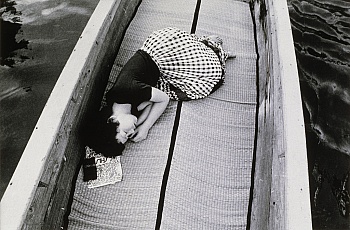 La Maison Européenne de la Photographie présente deux univers bien différents.
© Shoji Ueda Office. Collection MEP, Paris. Don de la société Dai Nippon Printing Co., Ltd.
© Eikoh Hosoe. Collection MEP, Paris. Don de la société Dai Nippon Printing Co., Ltd
L'exposition Mémoire et Lumière rassemble 540 photographies japonaises s'étendant de 1950 à 2000 sur l'ensemble des quatre niveaux de la MEP. Dédiée à la mémoire de Keiichi Tahara (1951-2017) et de Hiroshi Yamazaki (1946-2017), cette « collection dans la collection » révèle la place essentielle de la photographie japonaise. Ces photographes, rassemblés par l'engagement dans...
La Maison Européenne de la Photographie présente deux univers bien différents.
© Shoji Ueda Office. Collection MEP, Paris. Don de la société Dai Nippon Printing Co., Ltd.
© Eikoh Hosoe. Collection MEP, Paris. Don de la société Dai Nippon Printing Co., Ltd
L'exposition Mémoire et Lumière rassemble 540 photographies japonaises s'étendant de 1950 à 2000 sur l'ensemble des quatre niveaux de la MEP. Dédiée à la mémoire de Keiichi Tahara (1951-2017) et de Hiroshi Yamazaki (1946-2017), cette « collection dans la collection » révèle la place essentielle de la photographie japonaise. Ces photographes, rassemblés par l'engagement dans...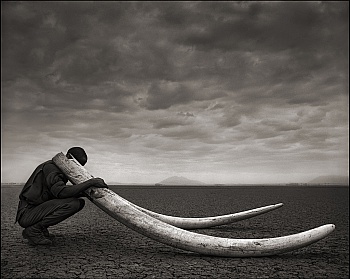 Atlas Gallery's press release
A new exhibition at Atlas Gallery will showcase the beauty of the platinum print through the work of diverse international photographers and artists from the early 20th century to the present day.
Platinum-palladium is a traditional printing technique, dating from the 19th century, favoured by photographers and collectors due to the tonal range of the prints. Platinum prints are amongst the most permanent man-made objects – it is thought that a platinum image, properly preserved, can last more than 5000 years.
The painterly quality of the platinum print was embraced by masters of photographer in the early 20th Century such as Edward Steichen and Alfred Stieglitz, who called the process ‘the prince of all media’. This quality, coupled with the tonal depth has le...
Atlas Gallery's press release
A new exhibition at Atlas Gallery will showcase the beauty of the platinum print through the work of diverse international photographers and artists from the early 20th century to the present day.
Platinum-palladium is a traditional printing technique, dating from the 19th century, favoured by photographers and collectors due to the tonal range of the prints. Platinum prints are amongst the most permanent man-made objects – it is thought that a platinum image, properly preserved, can last more than 5000 years.
The painterly quality of the platinum print was embraced by masters of photographer in the early 20th Century such as Edward Steichen and Alfred Stieglitz, who called the process ‘the prince of all media’. This quality, coupled with the tonal depth has le...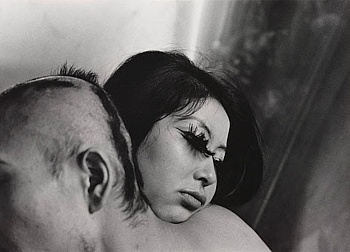 The Japanese photo magazine, Provoke, appeared for three issues between November 1968 and August 1969 and is regarded as one of the high points of post-war photography. In the largest ever exhibition devoted to the topic, Fotomuseum presents a close look at the magazine’s gestation, innovative aesthetics and the contribution of its key collaborators. The 1960s and 1970s were a turbulent period in Japanese history as workers, farmers and students protested the speed of modernisation and Japan’s alliance with the United States during the Cold War. The exhibition reveals how photography was deeply implicated in the aesthetic and political debates of the time, challenging and renewing older documentary forms. With around 250 objects, Provoke brings together photographs and publications by some of Japan’s mo...
The Japanese photo magazine, Provoke, appeared for three issues between November 1968 and August 1969 and is regarded as one of the high points of post-war photography. In the largest ever exhibition devoted to the topic, Fotomuseum presents a close look at the magazine’s gestation, innovative aesthetics and the contribution of its key collaborators. The 1960s and 1970s were a turbulent period in Japanese history as workers, farmers and students protested the speed of modernisation and Japan’s alliance with the United States during the Cold War. The exhibition reveals how photography was deeply implicated in the aesthetic and political debates of the time, challenging and renewing older documentary forms. With around 250 objects, Provoke brings together photographs and publications by some of Japan’s mo...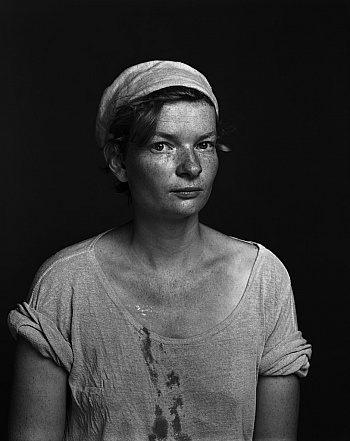 « Ensembles, la photographie » : l'exposition de la Maison Européenne de la Photographie (MEP) a pris ses quartiers d'été à Arles. Et ce sont les murs des chapelles du Méjean et de Saint-Laurent Le Capitole qui servent d'écrin aux joyaux de l'institution.
Commencée il y a plus de 35 ans, la collection de la MEP compte à ce jour 21 000 oeuvres environ. En voir une infime partie, c'est déjà en voir beaucoup.
A la Chapelle du Méjean, on révisera ses classiques, tandis qu'à Saint-Laurent Le Capitole, on fera face à des œuvres plus contemporaines. En deux actes, pas un drame, ni une comédie, plutôt un dialogue savoureux entre les photographes les plu...
« Ensembles, la photographie » : l'exposition de la Maison Européenne de la Photographie (MEP) a pris ses quartiers d'été à Arles. Et ce sont les murs des chapelles du Méjean et de Saint-Laurent Le Capitole qui servent d'écrin aux joyaux de l'institution.
Commencée il y a plus de 35 ans, la collection de la MEP compte à ce jour 21 000 oeuvres environ. En voir une infime partie, c'est déjà en voir beaucoup.
A la Chapelle du Méjean, on révisera ses classiques, tandis qu'à Saint-Laurent Le Capitole, on fera face à des œuvres plus contemporaines. En deux actes, pas un drame, ni une comédie, plutôt un dialogue savoureux entre les photographes les plu... "Conflict, Time, Photography" presents the many facets of the artistic portrayal of armed conflicts using the medium of photography. Artists such as Don McCullin, Pierre-Antony-Thouret, Simon Norfolk, Stephen Shore, Michael Schmidt and Taryn Simon have depicted acts of war and their legacy, in photographs taken in the mo-ment of the action, as well as days, months, years, and even decades after the event. This major group exhibition has no intention of serving as a ‘history of war photography’, however. It instead explores the various possibilities and strategies that artists and photographers have adopted to try to come to terms with violent conflict, in the hope of overcoming it. On show are some 200 works ranging from a period of just over 150 years in the history of photography, from 1855 to 201...
"Conflict, Time, Photography" presents the many facets of the artistic portrayal of armed conflicts using the medium of photography. Artists such as Don McCullin, Pierre-Antony-Thouret, Simon Norfolk, Stephen Shore, Michael Schmidt and Taryn Simon have depicted acts of war and their legacy, in photographs taken in the mo-ment of the action, as well as days, months, years, and even decades after the event. This major group exhibition has no intention of serving as a ‘history of war photography’, however. It instead explores the various possibilities and strategies that artists and photographers have adopted to try to come to terms with violent conflict, in the hope of overcoming it. On show are some 200 works ranging from a period of just over 150 years in the history of photography, from 1855 to 201...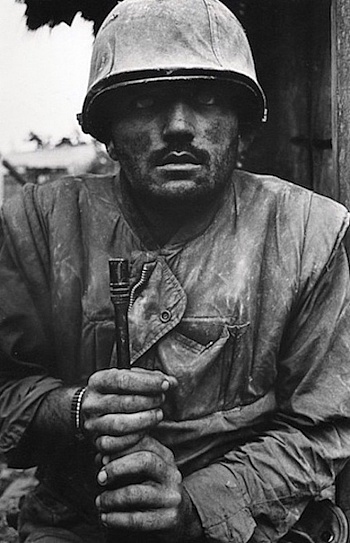 From the seconds after a bomb is detonated to a former scene of battle years after a war has ended, this moving exhibition focuses on the passing of time, tracing a diverse and poignant journey through over 150 years of conflict around the world, since the invention of photography.
© Simon Norfolk
In an innovative move, the works are ordered according to how long after the event they were created from moments, days and weeks to decades later. Photographs taken seven months after the fire bombing of Dresden are shown alongside those taken seven months after the end of the First Gulf War. Images made in Vietnam 25 years after the fall of Saigon are shown alongside those made in Nakasaki 25 years after the atomic bomb. The result is the chance to make never-before-made connections while viewing the legacy o...
From the seconds after a bomb is detonated to a former scene of battle years after a war has ended, this moving exhibition focuses on the passing of time, tracing a diverse and poignant journey through over 150 years of conflict around the world, since the invention of photography.
© Simon Norfolk
In an innovative move, the works are ordered according to how long after the event they were created from moments, days and weeks to decades later. Photographs taken seven months after the fire bombing of Dresden are shown alongside those taken seven months after the end of the First Gulf War. Images made in Vietnam 25 years after the fall of Saigon are shown alongside those made in Nakasaki 25 years after the atomic bomb. The result is the chance to make never-before-made connections while viewing the legacy o...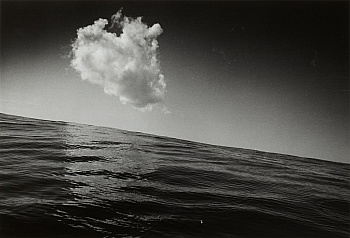 À l’occasion de son ouverture à Paris, la Galerie Taka Ishii Photography expose le travail de Shomei Tomatsu, l'un des plus importants photographes japonais contemporains.
La Galerie Taka Ishii, ouverte à Tokyo en 1994, expose et publie les oeuvres d’artistes japonais et étrangers de renom, tout en soutenant le développement de jeunes artistes. Fin 2010, la Galerie inaugure un nouvel espace, Taka Ishii Photography/film, consacré aux oeuvres de photographes japonais et étrangers, de notoriété mondiale ou moins connus, de l’avant et de l’après-guerre. La Galerie permet également de découvrir des films souvent méconnus réalisés par des photographes.
Cette année, la Galerie Taka Ishi...
À l’occasion de son ouverture à Paris, la Galerie Taka Ishii Photography expose le travail de Shomei Tomatsu, l'un des plus importants photographes japonais contemporains.
La Galerie Taka Ishii, ouverte à Tokyo en 1994, expose et publie les oeuvres d’artistes japonais et étrangers de renom, tout en soutenant le développement de jeunes artistes. Fin 2010, la Galerie inaugure un nouvel espace, Taka Ishii Photography/film, consacré aux oeuvres de photographes japonais et étrangers, de notoriété mondiale ou moins connus, de l’avant et de l’après-guerre. La Galerie permet également de découvrir des films souvent méconnus réalisés par des photographes.
Cette année, la Galerie Taka Ishi...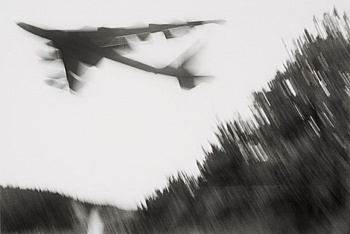 The first museum exhibition on Japanese photographer Shomei Tomatsu (1930–2012) since his death, anywhere in the world, and his first solo show in the United States in nearly ten years, Island Life is also the first to concentrate on Tomatsu’s long fascination with Japan’s southern islands.
In 1966, when he was just a decade into his career but already a highly influential figure, Tomatsu published a magazine series called The Sea around Us that ran for nearly a year. This sustained look at coastal waters, for which Tomatsu traveled all around his country, was inspired by a book of that title by the American environmentalist Rachel Carson, but also by Americanization itself, which had wrought profound changes in Japan since the bombings and occupation that ended World War II.
In 1969 Tomatsu ...
The first museum exhibition on Japanese photographer Shomei Tomatsu (1930–2012) since his death, anywhere in the world, and his first solo show in the United States in nearly ten years, Island Life is also the first to concentrate on Tomatsu’s long fascination with Japan’s southern islands.
In 1966, when he was just a decade into his career but already a highly influential figure, Tomatsu published a magazine series called The Sea around Us that ran for nearly a year. This sustained look at coastal waters, for which Tomatsu traveled all around his country, was inspired by a book of that title by the American environmentalist Rachel Carson, but also by Americanization itself, which had wrought profound changes in Japan since the bombings and occupation that ended World War II.
In 1969 Tomatsu ...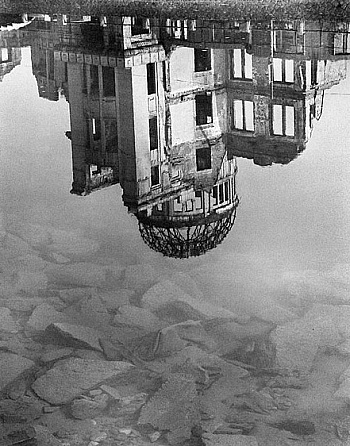 In the years following the Second World War in Japan, photography played an important role in the development of a new national identity. From the shock of the atomic bomb to the country's re-emergence at the 1964 Olympics in Tokyo, important photographers documented the birth of a new Japanese nation. This exhibition includes 123 photographs, as well as books, magazines and exhibition catalogues featuring works from 11 leading representatives of Japanese photography of these years.
In the mid-1950s a group of photographers came to the fore who started to move away from the sombre photo journalism that depicted the misery of the years immediately following the war. Affiliated with the Vivo photography agency, these photographers examined the consequences of the massive modernisation process that gripped the co...
In the years following the Second World War in Japan, photography played an important role in the development of a new national identity. From the shock of the atomic bomb to the country's re-emergence at the 1964 Olympics in Tokyo, important photographers documented the birth of a new Japanese nation. This exhibition includes 123 photographs, as well as books, magazines and exhibition catalogues featuring works from 11 leading representatives of Japanese photography of these years.
In the mid-1950s a group of photographers came to the fore who started to move away from the sombre photo journalism that depicted the misery of the years immediately following the war. Affiliated with the Vivo photography agency, these photographers examined the consequences of the massive modernisation process that gripped the co... We each relate to work in our own personal way. We may be employed or self employed; we may have just entered the workforce and have specific goals or we may be enjoying well-earned retirement. Working to earn a living is a salient feature of bourgeois society. It defines social status and belonging, while unemployment and not working bears the menace of being ostracized. From its earliest beginnings, photography has captured how, where and under what conditions people work – not only by in-house photographers, adhering to the perspective and specifications of the management but also by freelance photographers with an open-ended, unfiltered approach to places of production and trade. In both content and motif, the exhibition “Arbeit/Labour” traces the transition from physical labour to automa...
We each relate to work in our own personal way. We may be employed or self employed; we may have just entered the workforce and have specific goals or we may be enjoying well-earned retirement. Working to earn a living is a salient feature of bourgeois society. It defines social status and belonging, while unemployment and not working bears the menace of being ostracized. From its earliest beginnings, photography has captured how, where and under what conditions people work – not only by in-house photographers, adhering to the perspective and specifications of the management but also by freelance photographers with an open-ended, unfiltered approach to places of production and trade. In both content and motif, the exhibition “Arbeit/Labour” traces the transition from physical labour to automa... The work of Daido Moriyama and Shomei Tomatsu, the two giants of the Japanese post-war movement presented side by side for the first time in the UK, will be unveiled at the Michael Hoppen Gallery in September. While their photographs differ in style, sentiment is common to both. They address love, anguish and anger with equal power, passion and subtlety. Despite being relatively unknown outside his home country, Shomei Tomatsu, who is 77, is widely considered the most important figure in Japanese post-war photography. Combining a unique visual style with personal insight, his work spans a period of more than 50 years, examining the island nation since World War II with quiet brilliance and an uncompromising look on a complex, nuanced subject. His major retrospective at SFMOMA — Skin of a Nation, was ha...
The work of Daido Moriyama and Shomei Tomatsu, the two giants of the Japanese post-war movement presented side by side for the first time in the UK, will be unveiled at the Michael Hoppen Gallery in September. While their photographs differ in style, sentiment is common to both. They address love, anguish and anger with equal power, passion and subtlety. Despite being relatively unknown outside his home country, Shomei Tomatsu, who is 77, is widely considered the most important figure in Japanese post-war photography. Combining a unique visual style with personal insight, his work spans a period of more than 50 years, examining the island nation since World War II with quiet brilliance and an uncompromising look on a complex, nuanced subject. His major retrospective at SFMOMA — Skin of a Nation, was ha... Concept
On August 15th, 1945 the Pacific War came to an end and with it fourteen years of bombings, of deprivation and of great sacrifice for the Japanese people. With the collapse of Japanese militaristic rule and the arrival of the US occupation forces, the nation suddenly found itself thrust into a new and uncertain era. The myth of the Emperor's divinity, which was born during the Meiji era, was replaced with the American attempt at their homegrown brand of democratisation.
The belief in the Emperor and his government, which had accompanied Japan's development for several decades, was shattered. At the same time, despite the surrounding physical destruction, a feeling of intense relief swept across the country accompanied by a thirst for freedom and creative expression. The Japanese people craved discovery: the...
Concept
On August 15th, 1945 the Pacific War came to an end and with it fourteen years of bombings, of deprivation and of great sacrifice for the Japanese people. With the collapse of Japanese militaristic rule and the arrival of the US occupation forces, the nation suddenly found itself thrust into a new and uncertain era. The myth of the Emperor's divinity, which was born during the Meiji era, was replaced with the American attempt at their homegrown brand of democratisation.
The belief in the Emperor and his government, which had accompanied Japan's development for several decades, was shattered. At the same time, despite the surrounding physical destruction, a feeling of intense relief swept across the country accompanied by a thirst for freedom and creative expression. The Japanese people craved discovery: the...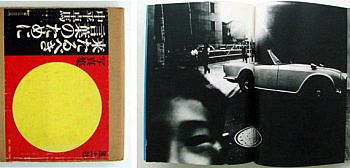 Carolina Nitsch is pleased to present FOR A LANGUAGE TO COME - Provoking Change in Japanese Postwar Photography at Carolina Nitsch Project Room in Chelsea. This exhibition of photographers and their seminal books in postwar Japan surveys a highpoint in the history of photography books. On display are vintage editions of some 35 rare Japanese photobooks from the late 1950s to the early 1990s and complete page by page media presentations of selected titles.
In no other country have photographers created so many publications and numerous Japanese photographers continue to prefer books as the ultimate presentation for their projects. Many photographers featured in this show were at the forefront of a postwar cultural movement in Japan. At its core was the iconoclastic magazine Provoke (1968-69), which had a vital influenc...
Carolina Nitsch is pleased to present FOR A LANGUAGE TO COME - Provoking Change in Japanese Postwar Photography at Carolina Nitsch Project Room in Chelsea. This exhibition of photographers and their seminal books in postwar Japan surveys a highpoint in the history of photography books. On display are vintage editions of some 35 rare Japanese photobooks from the late 1950s to the early 1990s and complete page by page media presentations of selected titles.
In no other country have photographers created so many publications and numerous Japanese photographers continue to prefer books as the ultimate presentation for their projects. Many photographers featured in this show were at the forefront of a postwar cultural movement in Japan. At its core was the iconoclastic magazine Provoke (1968-69), which had a vital influenc... Shomei Tomatsu, “Prostitute, Nagoya”, 1958, printed later. Gelatin silver print, 35,2 x 25,9 cm.
Promised gift of Al Alcorn to the San Francisco Museum of Modern Art
© Shomei Tomatsu
Shomei Tomatsu – Skin of the Nation
"Skin of the Nation" focuses on the surfaces, faces, clothes and territories that, like a map, provide information about Japan's mood and sensitivities. Shomei Tomatsu, who was born in 1930 and grew up during the military regime in World War II, belongs to the "faithless" generation, as he himself has formulated it – to the generation that experienced the shock of Japan's change from a closed into an open society. His first photographs taken in the 1950s were dedicated to poverty-stricken life in post-war Japan, to wounded soldiers, potters, farmers struck by floods, school children an...
Shomei Tomatsu, “Prostitute, Nagoya”, 1958, printed later. Gelatin silver print, 35,2 x 25,9 cm.
Promised gift of Al Alcorn to the San Francisco Museum of Modern Art
© Shomei Tomatsu
Shomei Tomatsu – Skin of the Nation
"Skin of the Nation" focuses on the surfaces, faces, clothes and territories that, like a map, provide information about Japan's mood and sensitivities. Shomei Tomatsu, who was born in 1930 and grew up during the military regime in World War II, belongs to the "faithless" generation, as he himself has formulated it – to the generation that experienced the shock of Japan's change from a closed into an open society. His first photographs taken in the 1950s were dedicated to poverty-stricken life in post-war Japan, to wounded soldiers, potters, farmers struck by floods, school children an... "Skin of the Nation" focuses on the surfaces, faces, clothes and territories that, like a map, provide information about Japan's mood and sensitivities. Shomei Tomatsu, who was born in 1930 and grew up during the military regime in World War II, belongs to the "faithless" generation, as he himself has formulated it - to the generation that experienced the shock of Japan's change from a closed into an open society. His first photographs taken in the 1950s were dedicated to poverty-stricken life in post-war Japan, to wounded soldiers, potters, farmers struck by floods, school children and students from the poor social classes. At the end of the 1950s, he founded the "Vivo" photo agency with Kikuji Kawada, Eikoh Hosoe and others. During the 1960s he was regarded as the most important and influential post-war photographer. H...
"Skin of the Nation" focuses on the surfaces, faces, clothes and territories that, like a map, provide information about Japan's mood and sensitivities. Shomei Tomatsu, who was born in 1930 and grew up during the military regime in World War II, belongs to the "faithless" generation, as he himself has formulated it - to the generation that experienced the shock of Japan's change from a closed into an open society. His first photographs taken in the 1950s were dedicated to poverty-stricken life in post-war Japan, to wounded soldiers, potters, farmers struck by floods, school children and students from the poor social classes. At the end of the 1950s, he founded the "Vivo" photo agency with Kikuji Kawada, Eikoh Hosoe and others. During the 1960s he was regarded as the most important and influential post-war photographer. H...